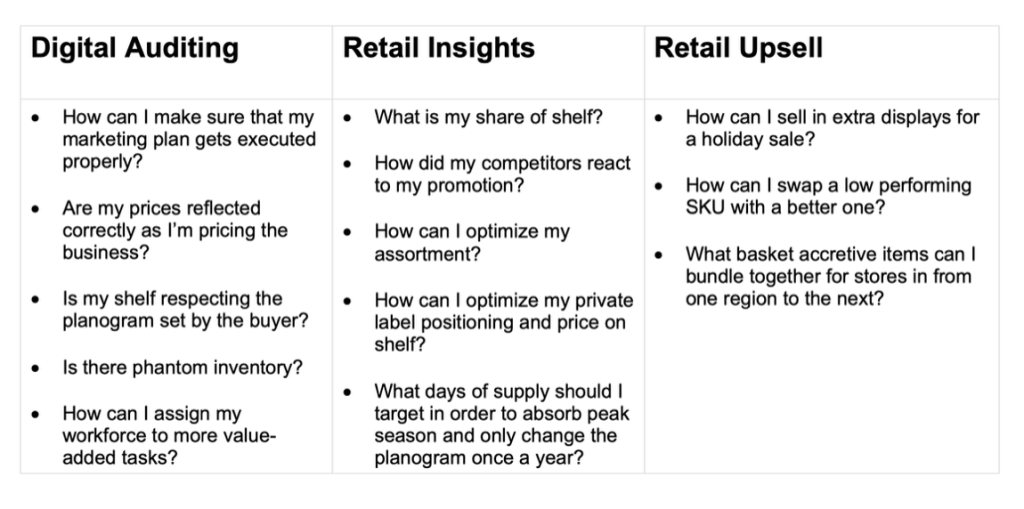How Artificial Intelligence Can Empower Retail Workers

Shoppers are returning to stores especially as society learns to live with the pandemic. During the start of the 2022 holiday season, the number of shoppers going back to physical stores well exceeded the expectations of the National Retail Federation. But stores continue to face the reality of not having enough store associates to manage the foot traffic.
The Labor Shortage Hurts the Retail Customer Experience
A study from UKG finds many U.S.-based retail stores are struggling to meet sales goals because they are short staffed (80 percent, up from 68 percent in 2021). The study says customers will likely feel the impact of these labor challenges when shopping for the holidays (72 percent). And as reported in The Washington Post, many retailers struggled to provide adequate customer service on Black Friday, the busiest shopping day of the year, as evidenced by slow service and long wait times.
And the problem will continue long after the holiday season ends. Forrester says that 72 percent of U.S. retail sales will still occur in brick-and-mortar stores in 2024. This is partly because shoppers (especially grocery shopping) remain a tactile experience. On one hand, there are not enough store associates to fill key roles required from stock the shelves to service customers. On the other hand, there are also not enough CPG retail execution teams to go from store to store in order to ensure their own products are properly shelved, promotional displays in place, and retail space fully optimized.
As a result, traditional in-store retail execution suffers from low store coverage, long in-store execution times, partial compliance, stockouts, and infrequent upsells. Retailers and CPGs are missing opportunities to collaborate more effectively on activities such as planning promotions and demand forecasting. Even worse, shoppers whose expectations for attentive and fast customer service were formed before the pandemic are increasingly unhappy with the experience they’re getting now.
According to Raleen Gagnon, vice president and general manager of total talent intelligence at Magnit, “The labor shortage isn’t going away for another few years. We just don’t have as many people entering the workforce as we do leaving it.”
While the high unemployment compensation during the pandemic has often been cited as the main reason driving the retail worker shortage, Gagnon said several longer-term trends are at play, including competition from warehouses and shifting priorities among younger workers.
In addition, Rob Klitsch, director of the retail, hospitality, and food service practice at UKG, said, “Understanding why people are gravitating away from retail work or leaving their employer in search of a better alternative is the first step toward fixing the workplace experience and developing a safe and comfortable environment for employees to work and customers to shop. Employee experience determines customer experience, so to improve the latter, retailers must address their people’s needs first.”
Empower Staff with a Sense of Purpose and Control
So, what can retailers do about all this? The answer is to make retail more productive and satisfying to keep the employees that a retailer has.
According to Microsoft WorkLab research, the key to employee wellbeing and resilience is a sense of purpose and control over their work, which grows when employees engage in fewer avoidable manual tasks and engage in higher-value tasks that increase their sense of purpose at work.
Across the labor market, trends such as “The Great Reshuffle,” “The Great Resignation,” and “Quiet Quitting” are reflecting the widespread burnout, dissatisfaction, and desperation among frontline workers.
These challenges represent an important opportunity for retailers to better equip, develop, and engage the workers most critical to their success and survival. By investing in frontline retail workers with tools and technology, businesses can attract and retain high-value talent to drive superior customer experiences and sustainable business growth.
Per Microsoft WorkLab, 63 percent of frontline workers are excited about the job opportunities technology creates, and technology ranks third on the list of factors that workers say could help reduce workplace stress.
AI + People = A Breakthrough
At Centific, we believe technology can help retailers do even more: specifically, with artificial intelligence (AI), retailers can deliver real-time insight on in-store operations. With that insight, they can make informed decisions faster and more accurately, leading to more time devoted to customer-facing needs and more accurate inventory levels on the store floor.
We’ve been developing a solution known as Lighthouse that does this.
Lighthouse consists of:
- An AI engine for understanding what’s on the shelf.
- A mobile app for information capture and staff support.
- An insight business platform to support decision-making at the corporate office, which aligns strategic planning with in-store operations.
Lighthouse makes it possible for retailers and CPG firms to collaborate on answering questions such as:

With the application of AI supervised by people, retailers and CPGers using Lighthouse can deliver benefits such as:
- Improving employee satisfaction via improved operational efficiency, communication and collaboration across retail teams, and fulfillment and sense of purpose at work from customer impact.
- Freeing up time from cumbersome low value-added tasks and allowing store associates to focus on customer service and merchandizing tasks.
- Optimizing inventory and store conversion: Leverage mobile phones to not only detect out of stock items and phantom inventory, but to also trigger immediate replenishment activities.
- Anticipating and responding to changing conditions: Response sooner to emergent events by adapting your pricing, assortment, and inventory markdowns with store level precision.
- Bringing collaborators onboard in seconds: Support the store with AI driven by an ensemble of models that ensure robustness, scalability, and accuracy for any in-store items.
These breakthroughs not only empower employees, they also improve the customer experience. According to Gartner, when businesses align the employee and customer experience effectively, they will outperform competitors by 25 percent in satisfaction metrics for both customer experience and employee experience.
AI guided by people will help retailers overcome the labor shortage by boosting frontline workers’ productivity, freeing up time for them to serve customers, and ultimately giving more purpose and control in their work. Happy employees deliver manifold returns in customer satisfaction. So, it’s important that retailers take action today to leverage advanced technology in order to reinvigorate joy at work and make your workforce more resilient.
Contact Centific to get started.
